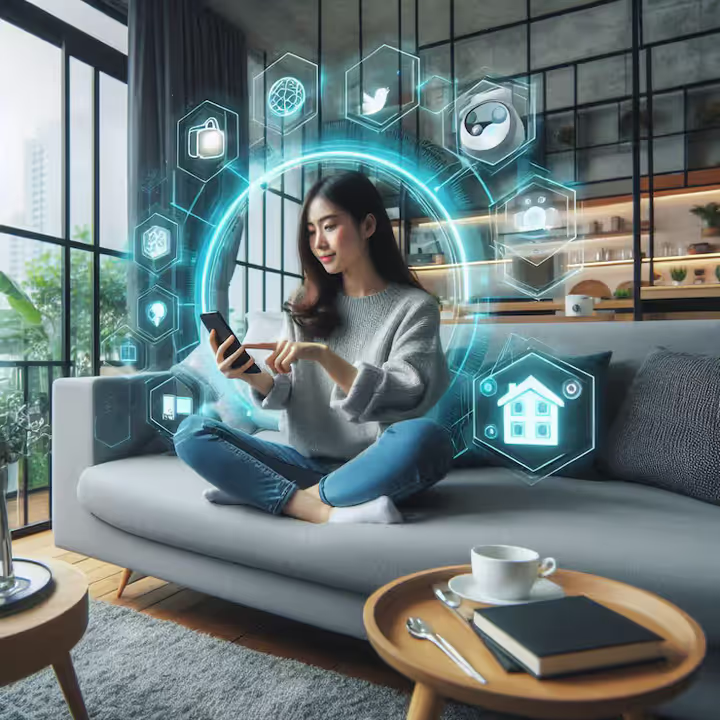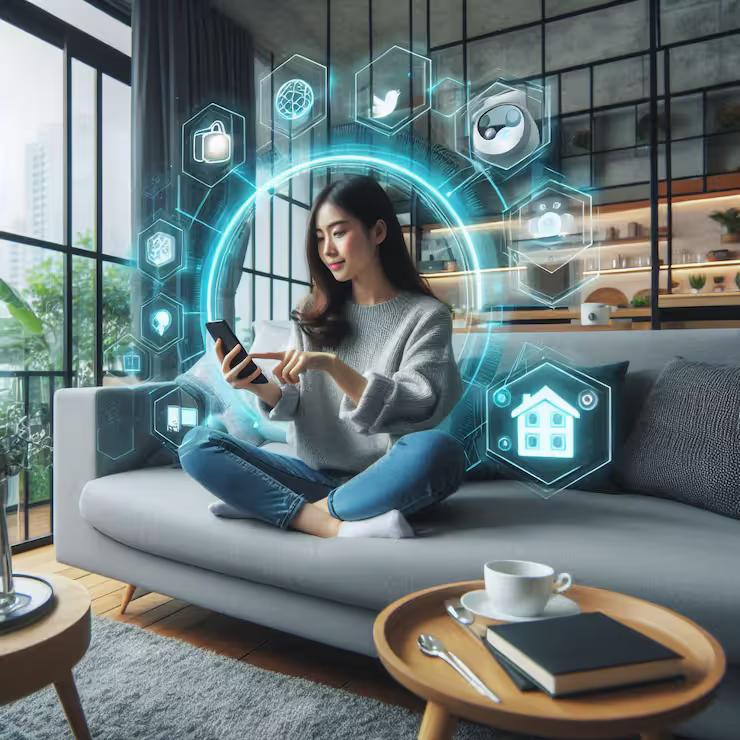
Discover the Key Benefits of Smart Home Technology Insights and Practical Tips
Smart home technology refers to an interconnected ecosystem of intelligent devices that automate, monitor, and manage household functions. These technologies are powered by the Internet of Things (IoT), artificial intelligence, and advanced sensors that communicate through wireless networks. Whether it’s lighting that adjusts automatically, security systems that alert you to unusual activity, or climate control that adapts to your habits, smart home ecosystems were created to make daily living more seamless and efficient.
This concept emerged as a result of rapid digital transformation and the growing demand for convenience and personalization in modern homes. As connectivity improved and device prices became more accessible, smart technology transitioned from a luxury feature to a practical solution for households seeking efficiency, comfort, and enhanced control.

Importance
Smart home technology plays a significant role in contemporary lifestyle for several reasons:
Enhances Energy Efficiency
Smart lighting, climate control systems, and energy-monitoring devices help households optimize energy usage. Automated scheduling, occupancy sensors, and real-time monitoring reduce wastage and improve environmental sustainability.
Strengthens Home Security
Keyless smart locks, motion detectors, real-time monitoring, and AI-powered cameras help create safer home environments. These systems can alert homeowners instantly and provide greater control over property access.
Improves Convenience and Personalization
Smart homes learn from user behavior. They adjust lights, temperature, and appliances to match routines. Voice assistants, automated routines, and predictive settings create a smoother and more customized living experience.
Supports Wellness and Indoor Comfort
Indoor air-quality monitors, smart purifiers, adaptive lighting, and temperature balancing systems support healthier living. Circadian lighting, for instance, adjusts brightness and color temperature to match natural daylight patterns.
Empowers Accessibility
For individuals with mobility challenges or elderly users, smart home tools offer independence. Voice commands, automated doorways, scheduled lighting, and remote controls make living spaces more accessible.
Rapid Market Growth
In many countries, the growing availability of high-speed internet, rising interest in intelligent home features, and increasing awareness of sustainability are driving the demand for smart home technology. This growth indicates a long-term shift toward more connected living environments.
Recent Updates and Trends
The smart home landscape continues to evolve rapidly. Key developments from the past year include:
Wider Adoption of Universal Device Standards
New interoperability standards have improved communication between devices from different brands. These updates allow homeowners to create mixed-brand ecosystems without compatibility issues.
AI-Driven Ambient Intelligence
Devices are increasingly capable of sensing presence, movement, sound, and even patterns of daily life. Homes can now automatically adjust lighting, climate settings, and appliance schedules based on real-time behavior.
Growth in Smart Energy Solutions
Predictive energy management tools are becoming more common. They analyze usage patterns, forecast energy needs, and optimize appliance operation to reduce consumption during peak hours.
Advances in Offline Voice Recognition
More smart devices are adopting offline speech processing. This trend reduces dependence on cloud connectivity, enhances privacy, decreases latency, and improves responsiveness.
Improvements in Smart Building Materials
New generations of smart windows, adaptive insulation materials, and energy-efficient glass technologies are emerging. These innovations aim to make sustainable architecture and smart automation more accessible to households.
Strong Shift Toward Edge Computing
Instead of relying solely on cloud-based servers, many smart home systems now process data locally. This approach boosts privacy, speeds up automation, and reduces the chance of outages affecting device performance.
Policy and Regulatory Landscape
Smart home technology is influenced by national and regional guidelines related to energy efficiency, safety, and data protection. Key policy influences include:
Energy Efficiency Building Guidelines
Many countries have introduced building codes encouraging or recommending automation features to optimize residential energy use. These guidelines promote the integration of sensors, programmable thermostats, and intelligent lighting systems into new and existing homes.
National Roadmaps for Home Automation
Some governments are developing policy frameworks that outline best practices for home automation, device standards, energy conservation, and integration with national sustainability goals.
Data Protection and Privacy Regulations
Smart home devices collect data ranging from energy-use patterns to occupancy behavior. This makes compliance with data privacy laws essential. Regulations often require transparent data usage, secure storage, and user consent before collecting personal information.
Support from Smart City Initiatives
Urban development programs increasingly promote connected infrastructure. The growth of smart grids, connected public utilities, and automated urban systems indirectly accelerates the adoption of smart home solutions.
Tools and Resources
Here is a curated list of tools, platforms, and resources helpful for planning or enhancing a smart home setup:
Smart Home Platforms
-
SmartThings – For managing multiple devices and creating custom automations
-
Google Home – For voice-based routines and ecosystem management
-
Apple HomeKit – For privacy-first automation and device integration
-
Alexa App – For voice control and smart routines
Energy and Monitoring Tools
-
Smart plugs with energy tracking
-
Power-monitoring smart switches
-
Usage dashboards that analyze consumption patterns
-
Climate-control apps for thermostat optimization
Home Automation Software
-
Home Assistant – Open-source hub supporting extensive device integration
-
Homebridge – Ideal for linking devices to Apple ecosystems
-
Local hubs with edge processing to reduce cloud dependency
Smart Home Planning Resources
-
Automation template creators
-
Routine planners for daily scheduling
-
Smart home mapping tools for designing layouts
-
Communities and forums sharing guides and practical insights
Hardware Resources
-
IoT-enabled sensors for motion, light, humidity, and temperature
-
Mini computers (e.g., hubs with built-in edge processing)
-
Offline voice modules for privacy-focused automation
FAQs
Q1: Do smart home devices really save energy?
Yes. When used effectively, energy-monitoring systems, automated thermostats, and smart lighting can significantly lower energy usage. Intelligent scheduling and activity detection help reduce unnecessary consumption.
Q2: Can devices from different brands work together?
Many modern devices support universal standards that allow cross-brand compatibility. However, compatibility depends on the specific platform and device generation.
Q3: How secure are smart home systems?
Smart home security depends on device settings, encryption, strong passwords, and regular software updates. Systems that use local processing offer additional privacy because they do not rely heavily on cloud servers.
Q4: Do smart homes always need an internet connection?
Not always. While some features rely on cloud connectivity, many automations can run locally using edge computing or offline voice recognition. You can still operate core functions even without internet access.
Q5: Are there regulations governing smart home installations?
Yes. Energy-efficiency codes, building guidelines, and data-protection rules influence how smart home systems are designed and implemented. These policies help ensure safety, sustainability, and user privacy.
Conclusion
Smart home technology is reshaping the way people interact with their living spaces. It enhances convenience, strengthens home security, promotes energy efficiency, and improves quality of life through intelligent automation. With rapid technological advancements such as AI-powered sensing, offline voice processing, and improved interoperability the smart home ecosystem is becoming more adaptive, accessible, and privacy-conscious.
Government policies focusing on energy efficiency and digital infrastructure are also supporting this growth, making smart homes a key part of future-ready urban development. With the right tools, platforms, and planning, anyone can start building a personalized smart home that evolves with their lifestyle.










